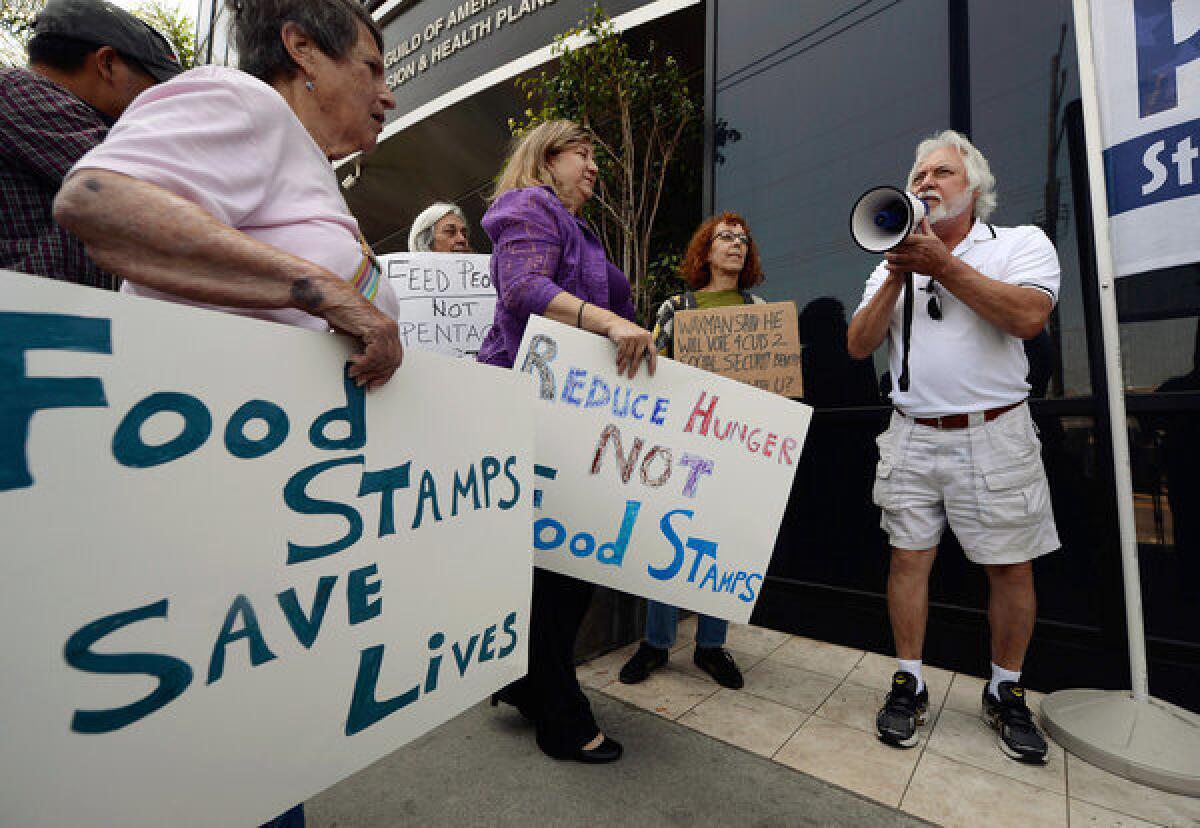House defeats farm bill, but food stamps still a target

- Share via
Supporters of the federal food stamp program exulted Thursday when the House defeated a major agriculture bill that would have trimmed its budget by a few percent. But if they think the House rejected the bill because of the food stamp cuts, they can’t count votes.
The bill, HR 1947, would have reauthorized the full range of farm programs for five years at an estimated cost of almost $1 trillion. About three-quarters of the funds would have gone to food stamps, a.k.a. the Supplemental Nutrition Assistance Program.
After a day of voting on amendments, lawmakers rejected the bill, 195 to 234. Only 24 Democrats voted for the measure, largely because of the food stamp provisions. In addition to the original bill’s proposed changes in enrollment limits, which would knock almost 2 million recipients (out of 47 million) off the rolls, the House amended the bill Wednesday to let states test applicants for drug use and impose more stringent work requirements. (Many childless adults already are limited to three months of food stamps when they’re unemployed, except during times of high joblessness. Like, umm, now.)
The amendments thinned the ranks of Democrats supporting the bill, but the vast majority had been expected to oppose it anyway. The success or failure always depended on the GOP’s ability to line up an overwhelming number of its members behind the bill.
It didn’t, and that’s true in part because the measure didn’t cut food stamp spending enough to suit some Republican deficit hawks. More important, though, was that it didn’t do enough to wean farmers from U.S. aid. Although the measure would have eliminated one of the most egregious farm subsidies -- an aid program that made payments to farmers regardless of whether they’d planted their fields -- it sought to create new ones to preserve farm incomes near their current, extraordinarily high levels.
The authors of the bill have two potential paths out of the House. One is to woo Democrats by spending more on food stamps and less on farm subsidies. That seems unlikely, given the opposition it would face from farm-state Republicans. The more plausible alternative is to seek more conservative GOP votes by spending even less on food stamps, possibly in combination with deeper cuts in farm programs.
My guess is that the bill won’t make its way through the House. That’s because it faces not just the usual split between right and left, but also between rural Republicans and suburban fiscal hawks, and between competing interests within the farm lobby. Current programs will continue to run on a stop-gap basis, as they have been since the end of last year.
That may be the best-case scenario for food stamp supporters. After all, the government issues food stamps automatically to anyone who’s eligible, even when the program’s authorization has lapsed.
Still, Democrats had better hope that the economy picks up steam and the food stamp rolls shrink faster toward their pre-recession levels. Otherwise, they will be left trying to explain why nearly 1 in 5 U.S. households should benefit from a safety-net program.
ALSO:
A tax system that targets workers
UC and Native Americans: Unsettled remains
Follow Jon Healey on Twitter @jcahealey
More to Read
A cure for the common opinion
Get thought-provoking perspectives with our weekly newsletter.
You may occasionally receive promotional content from the Los Angeles Times.










